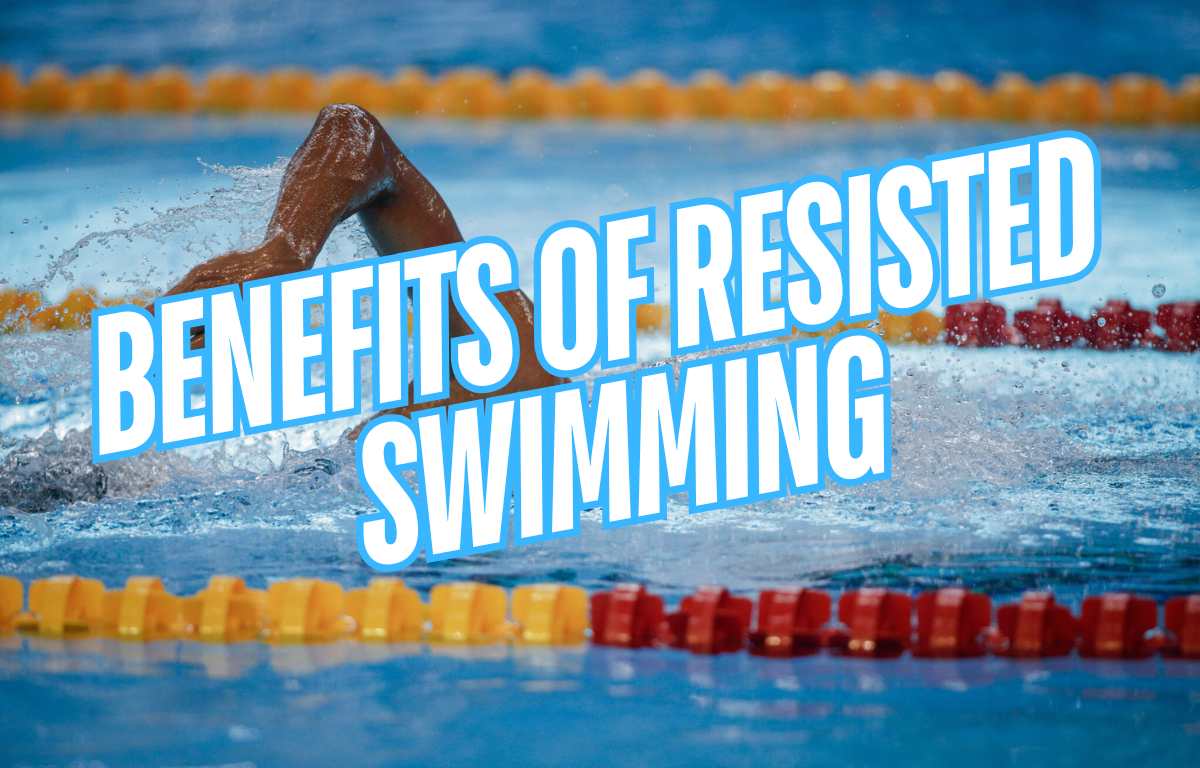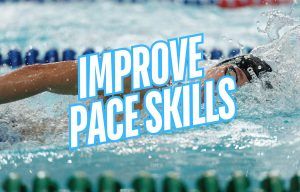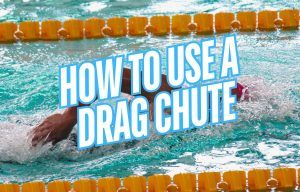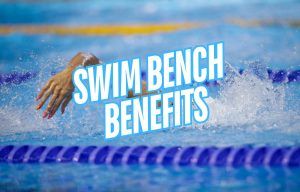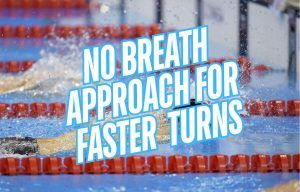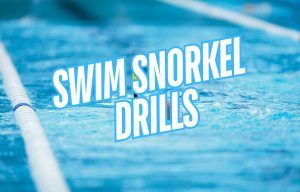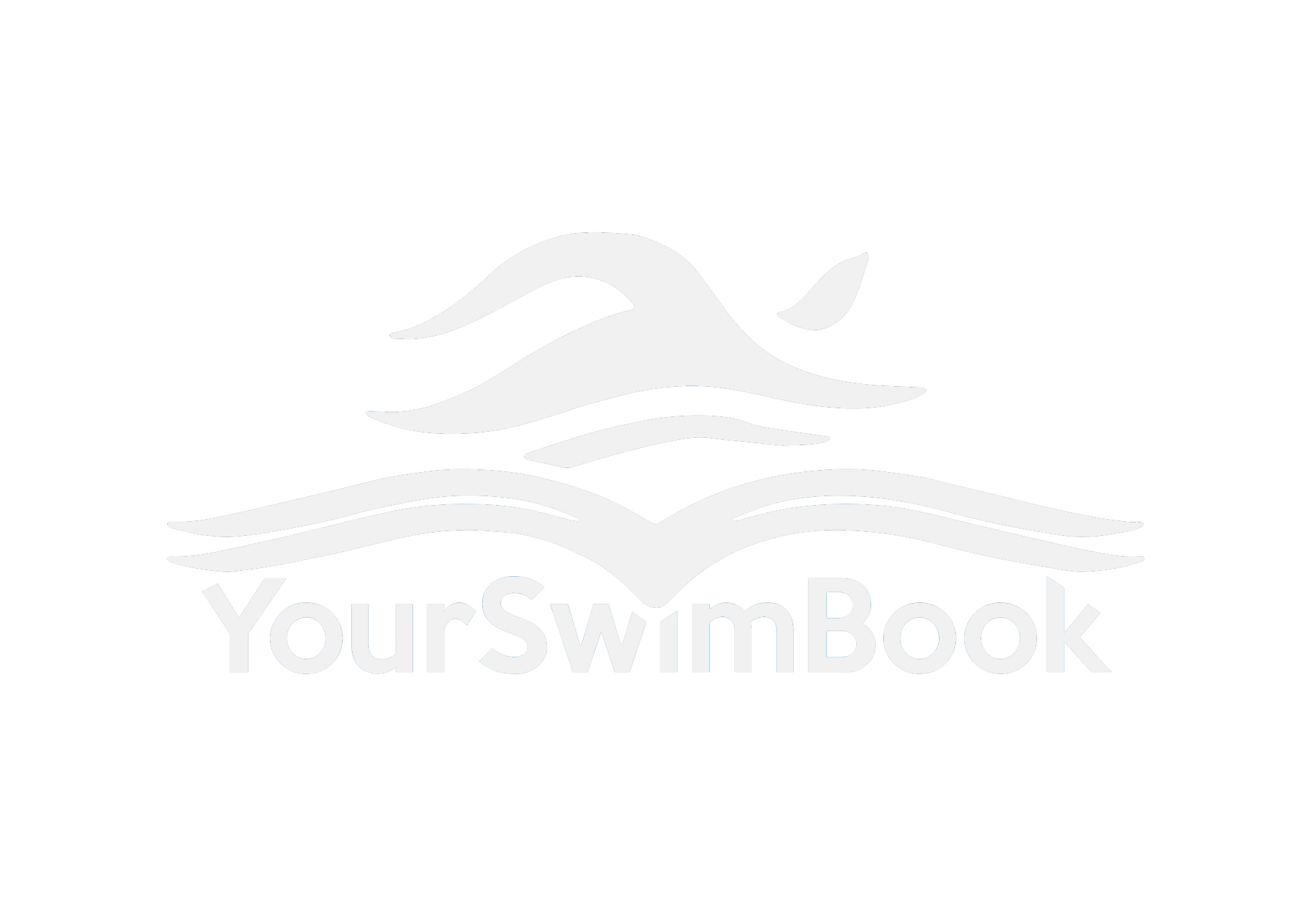Ready to swim stronger and faster? Here is a look at the full range of benefits of resisted swimming for improving swim performance.
Resisted swimming, a form of swim training that incorporates added resistance, is a popular but often misunderstood way for swimmers to improve their performance in the water.
Resisted swimming tools like a swim parachute, foot nets (like DragSox), resistance tubing, a weight belt, or power towers promote increased strength and power in the pool.
While resisted swimming is primarily viewed through the lens of swim-specific strength development, there is a full range of other benefits including a stronger core, more powerful catch, improved technique, increased stroke rate, and yes, faster swimming and kicking.
In this little article on the benefits of resisted swimming, we’ll dive into the numerous perks of using this form of training in the pool, from faster swimming (love that!) to stronger kick to improved technique.
Let’s dive in.
Benefits of Resisted Swimming
The benefits of resisted swimming include:
- Faster swimming
- Stronger kick
- Excellent core workout
- Post-activation potentiation
- Improved bodyline
- Stronger catch
- Increased stroke rate
- Low-intensity technique work
Next, we will look at each benefit in more detail, highlighting how swimmers can use resisted training in the water to supercharge their swimming.
1. Faster swimming
Resisted swimming creates additional drag that swimmers have to work hard to overcome.
Whether it’s through the use of swim parachutes, DragSox, resistance tubing, swim tether, or a power tower, the added resistance pushes swimmers to work harder during the propulsive phases of the stroke.
Over time, and with progressive overload, swimmers develop more powerful strokes that lead to faster swimming.
A study with competitive swimmers found that an 11-week resisted training protocol using a swim parachute and swim paddles significantly increased swimming velocity compared to a control group (Valkoumas et al., 2020).
Every swimmer’s goal is to get faster in the pool, and resisted training can help them achieve this task.
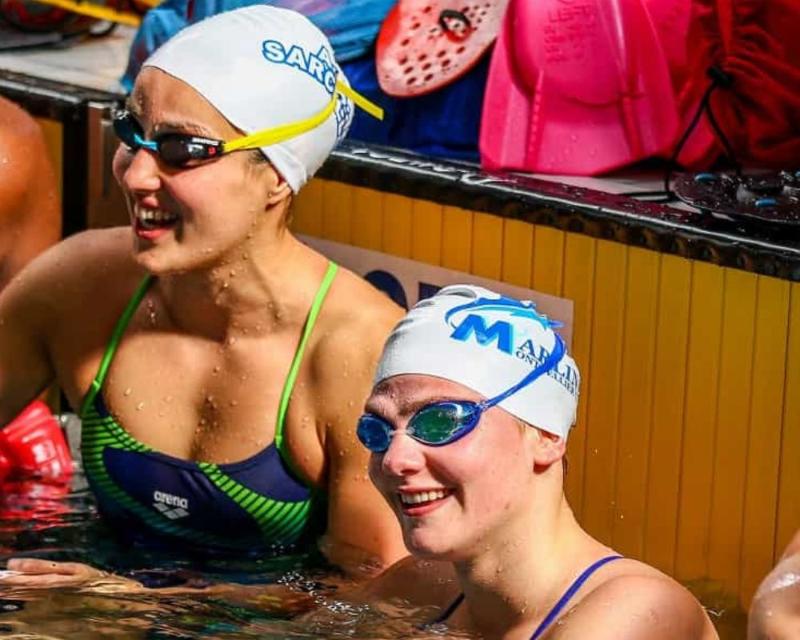
2. Stronger kick
In the words of David Marsh, an Olympic and NCAA-winning coach, “Fast swimmers are fast kickers.”
Resisted swimming, or resisted kicking, develops the leg muscles, particularly the quads, hamstrings and calves, in a swim-specific manner that improves kick velocity.
A study with elite Japanese competitive swimmers (Sengoku et al., 2020) found that a four-month intervention that included tethered underwater dolphin kicking significantly improved kicking velocity.
Interestingly, the swimmers got faster by improving kick frequency without increasing the amplitude of the kick.
Resisted kicking, especially with drag tools like DragSox or resistance tubing can help swimmers power up stronger underwater dolphin kicks and improve stroke kick.
3. Excellent core workout
Resisted swimming is also a great core workout!
The added drag and resistance behind the swimmer challenges core stability as the body is pushed to stay properly aligned and balanced.
Swimmers often struggle to activate the core when swimming, including the abdominals, obliques and lower back, and adding resistance increases muscle activation in the trunk.
See also: The Top 6 Core Exercises for Competitive Swimmers
A stronger core in the water improves body control, helps swimmers exert more power through the pull and kick, and reduces unnecessary movement, leading to more efficient and faster stroke.
Multiple studies (Karpinski et al., 2020; Khiyami et al., 2022) have shown core training to have a significant impact on swim performance, and resisted swimming in the water is another way to build a powerful trunk.
4. Post-activation potentiation
Post-activation potentiation is a training methodology that creates a temporary increase in athletic performance following heavy resistance exercise.
For swimmers, this means pairing resisted swimming with an all-out effort.
A study (Hancock et al., 2015) published in the Journal of Strength Conditioning Research took a group of 30 collegiate swimmers and had them try two different warm-ups followed by a 100m time trial.
One warm-up used a standard meet warm-up, while the other featured a PAP protocol of four 10s sprints on a power tower with a minute rest between rounds.
The PAP group “substantially” swam faster vs the control trial (0.54s faster, on average).
For swimmers without a power tower (e.g. most of us), this effect can be replicated with drag chute, DragSox or a swim tether.
Here is an example of what this would look like:
- 4x15m freestyle with drag chute all-out on 1:00
- Extra :60 rest
- 1x50m freestyle non-resisted swim all-out
Sets like this are awesome during taper phases or during top-end speed development workouts where swimmers can noticeably experience that supercharged effect of added speed.
5. Improved body line
One of the sneakiest benefits of swimming with increased resistance is that it promotes a more efficient body line when swimming.
This benefit is similar to when using added speed (fins or paddles, for example), with the body self-organizing to be more efficient as the heightened speed increases sensitivity to poor body position.
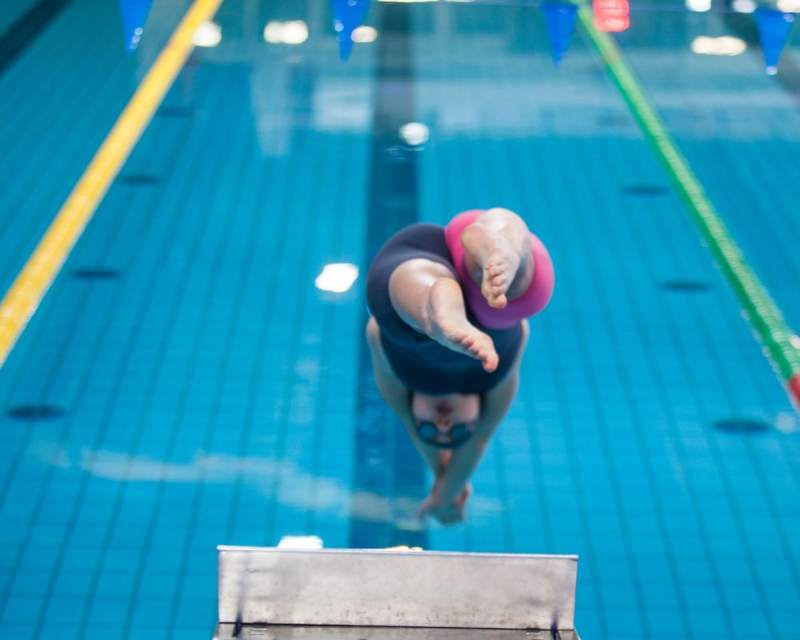
Resisted swimming does the same thing.
When you are tugging a parachute or have several plates loaded on the power tower, the body naturally settles into a more efficient body line to exert more power and overcome drag and resistance.
6. Stronger catch
The catch is where a lot of swimmer’s stroke is made or broken.
That initial part of the pull, where a swimmer’s hand is “going over the barrel” and points the fingers towards the bottom of the pool is where a majority of the propulsion happens in freestyle.
Resisted swimming increases the load during this phase, forcing swimmers to better engage the lats, forearms, and shoulders.
Additionally, many swimmers will scull or slide the hands during the beginning of the catch, creating an excess scull movement that doesn’t contribute to propulsion (Smeets et al., 2017).
Adding resistance encourages swimmers to get into a vertical pulling position faster and avoid these wasted movements.
7. Increased stroke rate
Resisted swimming can help swimmers increase stroke rate by reducing the lags between propulsive and non-propulsive phases of the stroke.
This is particularly important for sprint swimmers who need to be able to maintain a higher and more intense stroke rate.
High stroke rates are linked to faster swim times and using resistance can help swimmers build the endurance and strength to swim with a higher stroke rate.
The same study mentioned earlier, Valokoumas et al., 2020, found that training with a drag chute increased stroke rate.
How did this happen?
The increased resistance promoted less “dead spots” in the stroke, increasing the time spent in propulsive phases of the stroke. By eliminating lags in the pulling motion, swimmers developed a higher stroke rate and faster overall swimming.
8. Low-intensity technique work
Resisted swimming tends to be performed at maximal or near-maximal levels. The thinking is that resisted swimming is to be treated like strength training in the gym; to get stronger you should be approaching your maximums.
But swimming with low to moderate resistance is also an excellent way to refine your technique and help accelerate skill development or simply get your feel for the water back.
As an example, at the beginning of the season or after a long break I will use the following set:
- 20×25 freestyle swim with a small chute, 50-60% intensity on a 50 second interval
The goal isn’t all-out effort, but to sharpen the catch, improve body line, activate the core, and build excellent muscle memory for future training.
Light resistance can be paired with drill work, too, including doing long dog drill with a swim snorkel on (to really isolate the catch phase), side kick with a FINIS Alignment Kickboard (to really dial in on optimal hip and shoulder rotation), and more.
Resisted swimming is generally used to improve top-end strength and speed, but with lighter loads, is an excellent tool for technique refinement.
Essential Tools for Resisted Swimming
To get the most of the benefits of resisted swimming you need to pick up some… resistance!
Here are some top-rated resistance swimming tools to help maximize performance in the pool.
1. Drag Chute
Drag chutes are one of the most popular tools for resisted swimming. They are portable, come in variable sizes, and can be used for swim and kick-centric sets for developing strength and power.
Drag chutes are also very inexpensive and don’t require a tether or large deck footprint like power towers.
The FINIS Swim Chute is far and away the best drag chute on the pool deck. It comes with an adjustable belt, varying resistance levels, and sturdy nylon construction.
2. DragSox
For kick-specific resistance work, a set of DragSox is a no-brainer. Made of mesh and wrapped around your ankles to create more drag, they are awesome for building a stronger, more powerful kick.
They are more versatile than a drag chute in that they can also be used for vertical kicking and are less prone to getting tangled in your feet.
Hitting higher levels of resistance is a little more difficult with the DragSox, but they are portable, last forever, and can be used for improving kick and swim power.

3. Resistance tubing
Next to a power tower, which is very expensive and takes up a ton of real estate on the pool deck, the best way to get maximal strength development in the water is with resistance tubing, also known as a swim tether.
The thick elastic tubing provides gradual resistance (or, in the case of a short belt, almost immediate and total resistance), and the tubing can be anchored to a starting block or the pool deck.
The StretchCordz SuperStroke Resistance Belt is far and away the best type of this tool, with high-grade elastic tubing, neoprene-sheathed belt, and multiple lengths to accommodate pool space and resistance goals.
The Bottom Line
Beyond all of the benefits of resisted swimming listed above, this form of training is high-focus and fun, and can also provide a measurable form of progress.
Being able to swim further out against resistance tubing, leveling up to a wider drag chute, or adding more plates to the power tower all signify improvement.
Ultimately, a fast swimmer is a strong swimmer in the water, and the benefits and tools listed above can help you achieve both those goals in the pool.
Happy swimming!

